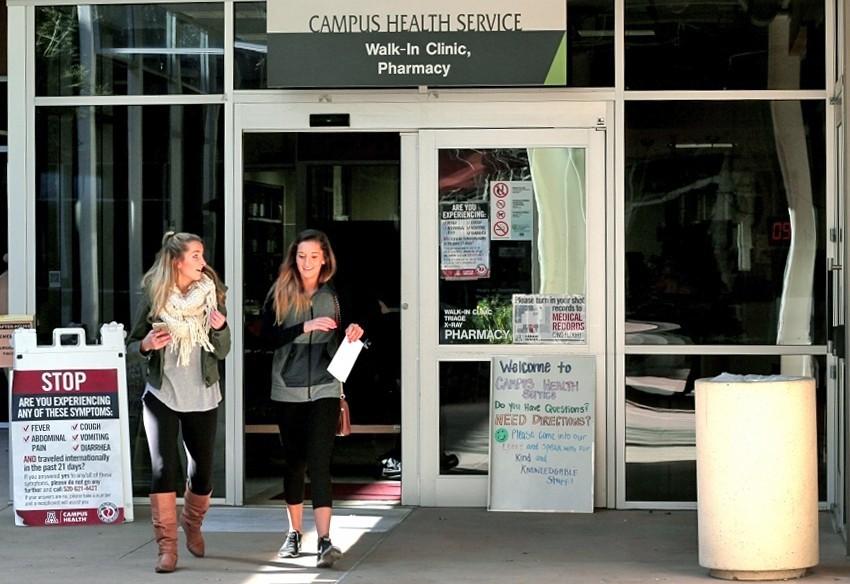A couple of months ago I had the pleasure of sitting down with Anthony Rusk, the Arizona student regent, to talk about how the University of Arizona addresses food insecurity and helps students meet their basic needs. He told me that he understands the needs of students aren’t directly met through the Dean of Students’ office because they refer students to a lot of resources rather than providing them directly. He said it’s important to him that a better system be put in place to assist students.
Rusk has been working toward solutions for economic scarcity as part of his role on the Arizona Board of Regents and has been a huge advocate for a concept the University of California schools have adopted: a Basic Needs Center.
Sylvester Gaskin, an associate dean of students for the UA’s Student Governance and Programs, described plans for a similar system to help students moving forward.
“I think we’re getting there, to create like a one-stop center,” Gaskin said. Describing the idea further, he said, “Essentially, it’s like one location where you can literally walk in, and know the assistance that you need, you can get.”
What exactly does “basic services” mean? It’s important to consider exactly what would be provided by such a service. Food, water, shelter, clothing; it’s the basics, the traditional survival needs. These necessities aren’t too far out of reach within the context of the proposed ideas.
When considering the context of the student experience, the list becomes a bit longer and potentially more challenging to supply. It might include things like computer and internet access, job applications and opportunities to turn in school assignments. The pandemic has shown exactly how important technological resources are for people to be successful. It might include healthcare to help students meet mental and physical needs. Lives largely confined to home during the pandemic have given us a better grasp on exactly how important maintaining physical and mental health is. It might include transportation — the ability to get to or from necessary services. Even the best resources and services are ineffective if they aren’t accessible.
These services aren’t necessarily out of reach to provide, but they would come with extra costs to the university, but you have to consider what we would be getting with the money that would be spent. Universities in general are in a unique position to assist. They know who they are helping (students), they have the ability to offer services at a central location (campus) and they have access to a variety of funding streams (student fees, government funding, donations and more).
The University of Arizona currently provides several resources to students that could potentially be centralized in one location, making utilizing those resources easier.
The Campus Pantry, chartered in 2012, offers food to University of Arizona students, faculty and staff. Counseling and Psych Services, or CAPS, is a subsection of Campus Health that seeks to help students with their mental health needs. Both SafeRide and CatTran are services that assist with transportation, including to and from grocery stores. Fostering Success, a subdivision of the Thrive Center, provides a list of resources students may need to attain success in their personal and academic lives; however, their main goal is to support students who have previously lacked access to stable housing (including foster care, youth on their own and people without homes). Last, and certainly not least, is the newly founded Richard H. Tyler Student Emergency Fund. The fund cites its mission as “to support students who are in danger from withdrawing from their classes due to an unexpected, temporary financial hardship. This hardship could be a result of illness, family crisis, natural disaster, or other emergency or crisis situations.”
I had the opportunity to talk with Chrissy Lieberman, an assistant dean of students for Student Assistance and Accountability. She explained, “Even when the pandemic starts to settle, and we get to a place of somewhat recovery, we will always have an emergency fund, even if it’s smaller.”
Considering a more complex list of students’ needs that includes food, water, shelter, clothing, internet, technology, healthcare and transportation, a disjointed system might struggle to facilitate comprehensive support, a one-stop-shop for all student needs can allow the university to focus on exactly what resources are provided and exactly where they are located, make feedback easier and foster stronger community among students.
Dillon Hlohinec is a UA student studying political science and philosophy, politics, economics and law.
Editor’s Note: This piece was produced as part of the “Confronting Scarcity Project” – a collection of reporting, commentary, maps, audio and more aimed at destigmatizing and amplifying the conversation around food and basic needs insecurity. This project was produced with students and the university community in mind as part of a collaboration between the Daily Wildcat and the UA School of Journalism’s student media apprenticeship program.
Follow the Daily Wildcat on Twitter









